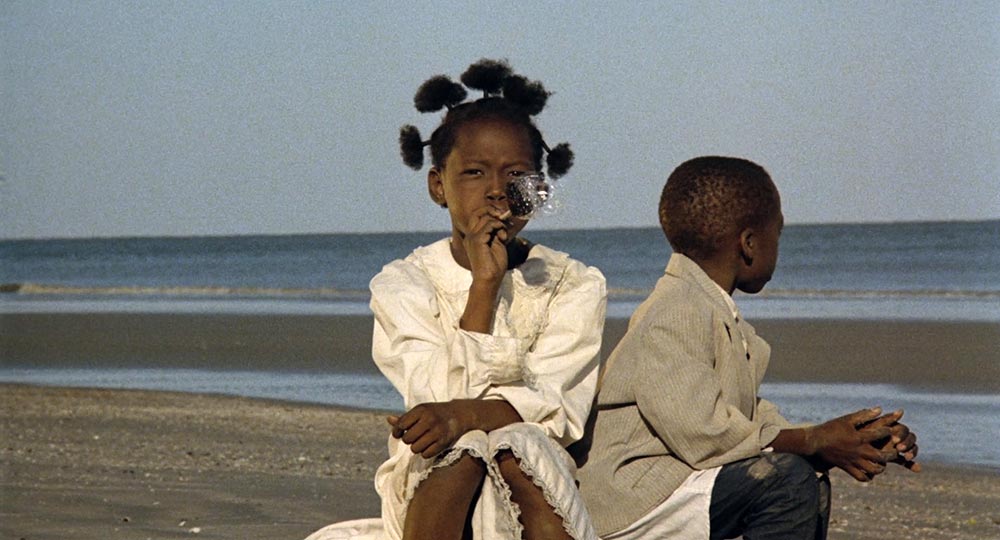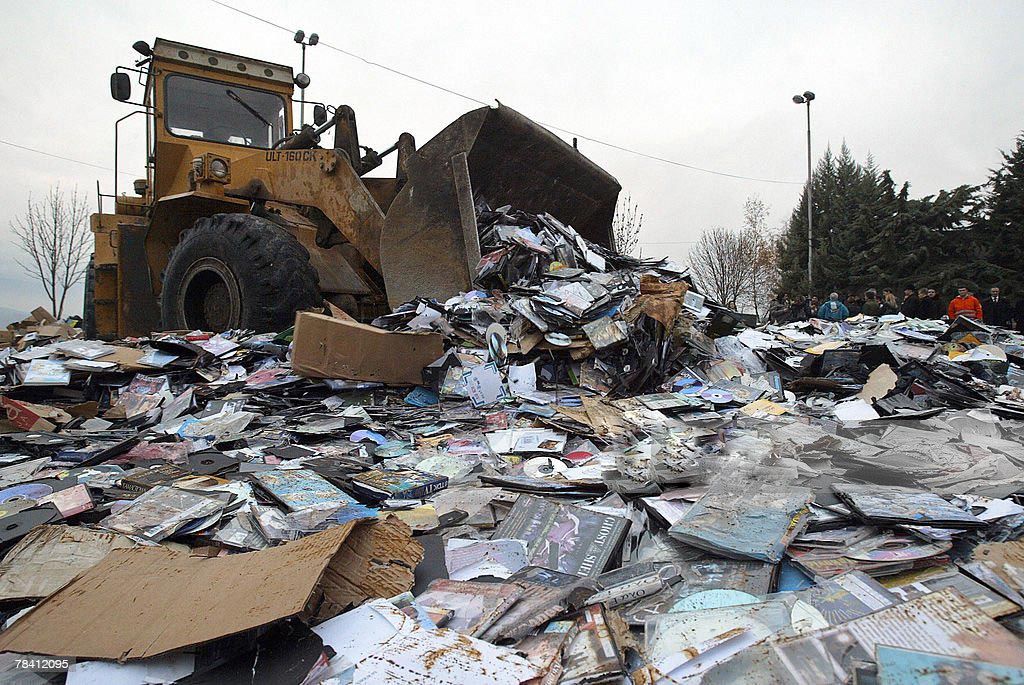It’s strike girl summer in the entertainment industry. The Writers Guild of America (WGA) and the Screen Actors Guild-American Federation of Television and Radio Artists (SAG-AFTRA) are on strike against the Alliance of Motion Picture and Television Producers (AMPTP). While a myriad of issues related to equitable compensation of labor are on the negotiating table, the main causal factors are related to the devaluation of labor by streaming platforms. On social media, writers and actors are sharing posts revealing their abysmal residual checks of mere pennies from work on enormously popular shows that have generated millions in profits.
Over the past decade, streaming services have brought back the vertical integration of the old Hollywood studio system. Old Hollywood studios like Paramount, Metro-Goldwyn-Mayer, 20th Century Fox, Warner Bros., and RKO Pictures created an oligopoly in which their studios essentially owned the entire chain of production, distribution, and exhibition of film. Actors, directors, and writers were often coerced into multi-picture contracts that routinely undercompensated the constant, quick-churned work that made fortunes for studio executives.
The studio system eventually came under fire for breaking antitrust laws. They were sued by the U.S. Department of Justice (DOJ) in 1938 for illegal trade practices. This lawsuit argued that the studios engaged in a conspiracy to fix and monopolize film distribution and exhibition markets. The DOJ drew interest in studios because of the massive profits that were gained through distribution and exhibition markets. The case reached the Supreme Court in 1948.
The Supreme Court ruling, which became known as the Paramount Decrees, forced major studios to divest themselves from theaters with the exclusive right to show their own films. The studios now had to license their films to theaters they did not own, enabling those cinemas to diversify their programming and cater to a wider audience. What followed was the rise of rental houses, repertory cinema, foreign film distribution, and independent theaters. While large studios still retained their grip over the entertainment industry, these distributed platforms cultivated space for cinephiles and communities to grow over the past seventy years, until the courts terminated the decrees in the fall of 2020.

The termination of the decrees made no mention of streaming services that are associated with tech companies, like Amazon and Apple, and this is because they are not legally recognized as movie studios. According to the DOJ, the reasoning behind the termination was because, in their logic, the Old Hollywood system could not exist in today’s market, and many of the studios in the original case no longer exist (or have merged into each other). But as G. Vaughn Joy writes, the repeal seems to make the industry more equitable for major corporations, unlike the original decree which was to make the industry more equitable for independent producers and exhibitors.
In the mid 20th century, the rise of home-entertainment services like cable and VHS rentals arriving in the 1970s and growing in popularity through the 1990s, gave studios an incentive to preserve their work. These distribution channels also influenced how films were produced and acquired, as a film’s success was no longer solely dependent on whether it recuperated its budget in its theatrical run. However, studios by and large continued to ignore their film archives despite the availability of home distribution.
Herein is where independent theaters and film programmers, unintentionally, became key figures in the preservation of film history: by exhibiting films that the studios would have otherwise destroyed. Scholar and archivist Jan-Christopher Horak observes that studios are only motivated to archive a film if there is money to be made by doing so. And, since studios are tasked with the preservation of their own archives, only the most valuable properties are restored while others are forgotten, left to rot, or even intentionally destroyed.
While the period of distributed growth in the film industry following the Paramount Decrees is essential to acknowledge, distribution hell has and continues to plague emerging filmmakers, creating noticeable absences of who gets to release feature film. Infamously, Julie Dash’s Daughters of the Dust (1991), the first film by a Black woman to be distributed theatrically in the United States, failed for many years to secure a distributor for home release. To paraphrase what Dash told filmmaker Yvonne Welborn in The Cinematic Jazz of Julie Dash (1993): Black women’s filmmaking is not understood by distributors because it centers Black women and distributors do not want to spend time in that reality. Barbara McCullough, Dash’s peer and member of the Los Angeles School of Black Filmmakers (aka the L.A. Rebellion) echoes this sentiment in her 1992 interview with Jump Cut. While she can have her work exhibited, she says, long-term distribution has evaded her because the category of Black women’s experimental film did not track with distributors.

Streaming services initially presented themselves as a solution, intentionally seeking out filmmakers overlooked by the Hollywood machinery, especially women and people of color. Over the past decade, we have seen streaming platforms snatching up young filmmakers’ works from festivals and making combined production and distribution deals. Though they offer the promise of exposure for emerging artists, these deals bear a striking resemblance to the exploitative contracts of Old Hollywood. Take, for instance, the Los Angeles Times report on the Netflix series Squid Game (2021), which detailed that the series creator Hwang Dong-hyuk’s contract with the streaming service included the forfeiture of his intellectual property (IP) and any future claims to royalties owed from the $900 million profit Netflix made from the show.
The studio push for streaming as the preferred method of distribution is not just a concern for new production, but should also be troubling for anyone interested in the archive of cinematic history. In an era when digital work can be edited and removed at will, no one can believe that streaming sites could function as a secure archive.
We have already witnessed enough revision and censorship on Disney+, from Star Wars to Splash (1984), to know that the impulse to edit is not in line with preserving the integrity of the film but only with the studio’s interests. Max (née HBO Max) is selling the streaming rights to shows like Westworld (2016–2022) and Insecure (2016–2021) and refusing to release completed projects like Batgirl. Studios are motivated to offload or shelve films for tax write-offs. This reminds us yet again that studios are not stewards in the preservation of film history, and the fact that they function as shepherds in this industry is actually a threat to film.
The actor Kristen Schaal recently bemoaned the removal of The Mysterious Benedict Society (2021–2022) from Disney+, tweeting a request for help ripping the show from the platform so that she might one day share the series with her daughter. Schaal’s appeal reminds us that personal, often informal, archives fill in the blanks of film history. For example, the legendary former Third World Newsreel archivist and programmer Pearl Bowser’s personal prints are the reason we have a restored director’s print of Bill Gunn’s Ganja & Hess (1973) and much of the work of early Black filmmakers in Hollywood like Oscar Micheaux. These clandestine channels of insiders sharing prints, ripped files, and physical media is often how we come to know of the myriad counter-histories of cinema.

Studios were entrusted with preserving the silent era, and 75% of that film history is now lost or intentionally destroyed. This was due to studios’ belief that films had no future following their theatrical run, as further profit could not be derived from them as a complete film. Many of these films were hacked up and sold as; shorts for toy projectors, film stills, or had their silver reclaimed amongst other deals to churn a profit from the film stock. Distributed networks of preservation reveal that cinema is a community of passionate cinephiles committed to the future of film in every aspect, especially independent and experimental film.
The community-driven projects that arise from the repertory and independent cinema world strive to compensate for the capitalist destruction of and erasure of archives, local journalism, and channels of access to film production and exhibition. Alfreda’s Cinema, spearheaded by film programmer Melissa Lyde, is one such initiative, programming films of the African diaspora across New York theaters and working to establish its own theater in Brooklyn. Maya Cade’s Black Film Archive is another, cataloging, via digital and written record, Black film history, which has been routinely erased or ignored by the Hollywood machine.
Screen Slate’s own vast archive of screening announcements, editorials, and programming reveal that these methods of community-driven work are not always formalized and, at times, shirk the licensing agreements enforced by studios. Consider how these non-profitable screenings contribute a vital role in the distribution and preservation of films. For example, do we really want to interrogate how Bowser acquired her copies of the rare film prints she had in her collection?
As vertical integration returns to the film industry via its makeover as a tech-driven disruptor sector, we can only hope that the strike wave is able to not only ensure equitable compensation for labor, but also reintroduce regulation that was lost with the termination of the Paramount Decrees. Throughout all of this media swirl related to film production, distribution, and exhibition, I am reminded of Carol Vernallis’s writing in Unruly Media (2013), where she describes the dangers of single-platform distribution channels: we need multiple streams of film exhibition to remind us of the heterogeneity film. Moreover, we need distributed spaces and channels because they are where community is forged. Or, as Gwendolyn Brooks wrote, in honor of the cinematic legend and steward of Black culture Paul Robeson: “We are each other’s harvest.”



